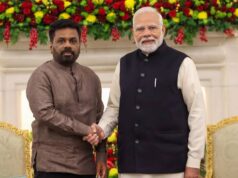By Dr. Rita Khanna
Tube lights require a certain voltage to function when switched on. In case the voltage goes down from the required 220V to 180 V, then what happens? No light ! For Air conditioners too we have a booster attached for completing the circuit whenever voltage is low thus enabling its continuous function.
However, if the voltage is very high, say 440 V, both the tube light and the armature in the air conditioner will burn out. Similarly, within our bodies we have a certain level of functional energy, Shakti, which can be increased or decreased. When this Shakti is decreased, the combined mind-body awareness and functions are impaired. On the other hand, when the energy level is raised too high, the brain becomes hyper excited or manic. Pranayama helps us to moderate this energy. Everyone hopes to enjoy a long, active and healthy life, free from disease. Therefore, it is most important that everyone should practice certain Pranayamas and Asanas on a daily basis.
CONSCIOUS AND PROPER BREATHING
Through scientific investigations it has been found that most people neither breathe correctly nor breathe enough to fulfil the needs of their body and brain. Breathing is a natural process with normal rhythm of 15 cycles per minute, 900 cycles per hour and 21,600 cycles per 24 hours.
When the breathing rate is increased, longevity is decreased. Fifteen cycles per minute is the rate which correlates to 75 or 80 years of life. Ten cycles per minute lengthens life to about 100 years. However more than 15 cycles, say 30 to 35 cycles will limit the lifespan, as with a dog for example, to just 10 or 15 years.
Quick, shallow breathing not only causes ageing, but is also not really beneficial for emotional integration and balance of the body. Therefore the first prerequisite in Pranayama is conscious breathing. One must Learn to maintain the normal breathing rate of 15 cycles per minute. Relax your body and become aware of your breath. Stop thinking and worrying for one minute and the breath rate will drop down to 15. But if you continue to think, the breathing rate will become higher. The thinking process affects the breath and the breath affects the thinking process.
By freeing your mind from emotional tension for half an hour, you can become aware of how you breathe. Psycho physiological experiments have proved that during moments of stress and strain though the intake of oxygen is very high all the while the consumption is very low, just about 1/10th of the actual need. This means that the greater portion of oxygen intake goes unused. Thus, after learning to breathe consciously for 15 cycles per minute, it is necessary to learn to breathe completely to the full capacity of our lungs. This is the second prerequisite of Pranayama.
Chest breathing is incomplete. In Yoga the complete breath consists of abdominal (diaphragmatic) breathing, chest (thoracic) breathing and shoulder breathing. This has to be practiced for some time until you are able to train your system to breathe correctly. Complete breathing is done through the abdomen.
In the beginning, practice with your hand on your navel. Relax all the tension in the chest and shoulders. Breathe a little deeper than natural and feel your abdomen expanding and contracting.
When this is perfected – inhale, first expanding the abdomen and then the chest in one slow, smooth motion.
When the maximum amount of air has been drawn into the lungs, the shoulders will get raised automatically. Complete breathing will free you from colds, cough, allergic asthma, sinusitis, migraine and many other problems.
Wrong breathing affects the heart; a person having a heart attack can control it immediately with correct breathing. This means that with the help of Pranayama it is possible to gain complete control over the voluntary as well as the involuntary functions of the heart.
THREE STAGES OF PRANAYAMA
Pranayama is based on the three stages of respiration: Pooraka (inhalation), Kumbhaka (retention) and Rechaka (exhalation). By permuting and controlling these three, different Pranayamas are obtained.
Kumbhaka is a very important part of Pranayama, especially for those who suffer from nervous break downs, poor memory and incorrect breathing habits like inhaling in short, quicker shallow breaths.
When we do not breathe correctly, the brain is not supplied with sufficient oxygen and therefore breathlessness is experienced.
During Pranayama the bodily secretions are arrested and controlled. Therefore the right time to practice Pranayama is in the morning on an empty stomach. It should not be practiced on a full stomach, not even after tea.
Pranayama is for every one regardless of age, sex or physical or mental condition. Anyone can learn and practice it.
However, Pranayama should be taught by a teacher, individually and not collectively. Each person has his own physical and mental constitution.
Therefore the teacher has to study his student’s particular makeup and accordingly the Pranayama and its ratio has to be adjusted.
PRANAYAMA FOR RELAXATION
For some people relaxation means an easy chair, a cup of tea or coffee and television viewing. In Yoga, relaxation means freeing the whole system from tension not only the physical body but also the conscious and subconscious mind. Sometimes when the physical body is resting the mind is not.
Sometimes the conscious mind is relaxing but the subconscious mind is not. If you take tranquilizers your conscious mind and body may be relaxed, but deep rooted worrying still goes on.
Pranayama can be utilized very effectively to bring about total relaxation along with emotional integration, because while doing it, we maintain perpetual awareness all the while bringing the mind down to deeper levels of the subconscious.
Abdominal breathing is a good technique for relaxation. This can also be done while lying down. Take a deeper breath than usual and during inhalation feel the movement of the abdomen. Forget your nose. Feel that you are breathing in through the abdomen.
Feel the abdomen expanding and contracting with each inhalation and exhalation. Count each breath with total awareness from 100 back to 1 (don’t count from 1 to 100).
If you make a mistake or lose count, start again from 100. Practice like this- 99 yes, 98 I know, 97 I am aware, 96 I am still counting. It is important to register each number in your conscious awareness.
Relaxation techniques stress total awareness of all mental functions, and in this particular practice awareness of the counting is very important. Awareness of the mind enables you to relax, but when you lose this awareness there is tension.
So count from 100 back to 1 without losing awareness, without making any mistakes. At the same time feel that the diaphragm is breathing, moving up and down with each inhalation and exhalation.
Next go to the throat. Listen to the sound of the breath and feel that the throat is breathing. Count each round from 100 back to
1. Now move up to the nostrils; keep your concentration between Nasikagra (the tip of the nose) and Bhrumadhya (the eyebrow centre).
Don’t go beyond that. Feel that the whole breathing process is taking place between the tip of the nose and the eyebrow centre, and count from 100 back to 1.
We have found that abdominal, throat and nose breathing is very good for all those suffering from hypertension or high blood pressure.
However, for people with normal blood pressure this practice is not recommended as it may cause their blood pressure to drop below normal. They can do the following technique.
Alternate breathing is a simple technique which anyone can practice. Lie down and feel that you are inhaling through the left nostril and exhaling through the right.
Don’t use your finger; just feel that you are breathing in through the right nostril and out through the left, and then in through the left and out through the right.
This is 1 cycle. Do 4 such cycles of alternate breathing and during the 5th cycle breathe in through both nostrils.
Go on practicing 6,7,8,9 cycles of alternate breathing and during the 10th cycle breathe in through both nostrils. Remember 1-4, 6-9, 11-14, breathe alternately and 5, 10, 15, breathe through both nostrils.
Practice this and in a minute you will feel more relaxed. Alternate breathing is beneficial to everyone. You can start with 15 cycles and work up to 51 cycles maximum.
Those having insomnia problem can practice these relaxation techniques before going to bed & these can be done in any position, lying flat on the back or on either sides.
Many a times during relaxation you will not be able to complete the practice because after just 3 or 4 cycles you will reach tranquility in and enter into sleep.
Pranayama will revitalize and give you the necessary energy to manage your daily problems and overcome all obstacles on your journey through life.
During moments of anxiety, insecurity, fear and passion, instead of fighting with your mind through the intellect, take the help of Pranayama and stabilize yourself.
Ujjayi is one of the most important, yet one of the simplest Pranayamas. It is practiced by contracting the glottis.
When done correctly Ujjayi sounds like a cat purring or light snoring. When a healthy child sleeps at night, he always breathes by contracting his glottis, and you can hear the breath in his throat.
Ujjayi is a deep breathing practice which induces a meditative state. Ujjayi is perfected by relaxing the breath rather than forcing it.
If you concentrate on the throat and relax the breath, you will find that you are breathing through the throat.
Of course the breath goes through the nostrils, but the glottis is contracted so there is a light snoring sound.
Systematic practice of Pranayama will also remove diseases of the eyes, nose and throat. This is the way to mental peace, physical health, revitalization and longevity.
Aum Shanti.
Dr. Rita Khanna is a well-known name in the field of Yoga and Naturopathy. She was initiated into this discipline over 25 years ago by world famous Swami Adyatmananda of Sivananda Ashram in Rishikesh (India).
She believes firmly that Yoga is a scientific process, which helps us to lead a healthy and disease-free life.
She is also actively involved in practicing alternative medicines like Naturopathy. Over the years, she has been successfully practicing these therapies and providing succor to several chronic and terminally ill patients through Yoga, Diet and Naturopathy. She is also imparting Yoga Teachers Training.
At present, Dr. Rita Khanna is running a Yoga Studio in Secunderabad (Hyderabad, India).




